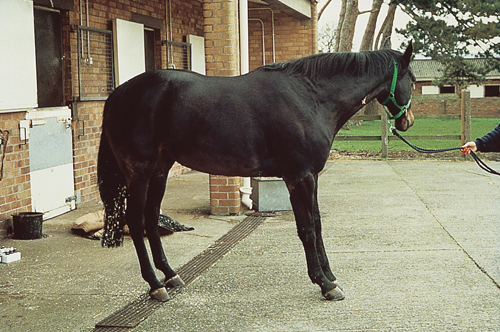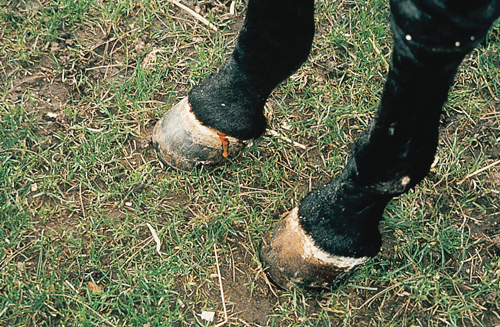Difference between revisions of "Equine Orthopaedics and Rheumatology Q&A 01"
Jump to navigation
Jump to search
| Line 13: | Line 13: | ||
|a1= | |a1= | ||
Severe laminitis. | Severe laminitis. | ||
| − | |l1=Laminitis | + | |l1=Laminitis - Horse |
|q2=Where is the horse likely to have spent the night of freedom? | |q2=Where is the horse likely to have spent the night of freedom? | ||
|a2= | |a2= | ||
The feed room. This type of case is often associated with grain overload while the animal is out of the stable. | The feed room. This type of case is often associated with grain overload while the animal is out of the stable. | ||
| − | |l2=Laminitis#Increased Risk Factors | + | |l2=Laminitis - Horse#Increased Risk Factors |
|q3=What treatment would you recommend? | |q3=What treatment would you recommend? | ||
|a3= | |a3= | ||
Discharge from the coronary band suggests that at least one hoof is starting to slough. The findings were similar in the other four feet, so the horse was destroyed. | Discharge from the coronary band suggests that at least one hoof is starting to slough. The findings were similar in the other four feet, so the horse was destroyed. | ||
| − | |l3=Laminitis#Treatment | + | |l3=Laminitis - Horse#Treatment |
</FlashCard> | </FlashCard> | ||
Latest revision as of 22:47, 14 August 2011
| This question was provided by Manson Publishing as part of the OVAL Project. See more Equine Orthopaedic and Rheumatological questions |
An 11-year-old mare has been lame for three weeks, after escaping from her stable one night. Recently, her condition has markedly deteriorated.
| Question | Answer | Article | |
| What is your diagnosis? | Severe laminitis. |
Link to Article | |
| Where is the horse likely to have spent the night of freedom? | The feed room. This type of case is often associated with grain overload while the animal is out of the stable. |
Link to Article | |
| What treatment would you recommend? | Discharge from the coronary band suggests that at least one hoof is starting to slough. The findings were similar in the other four feet, so the horse was destroyed. |
Link to Article | |

